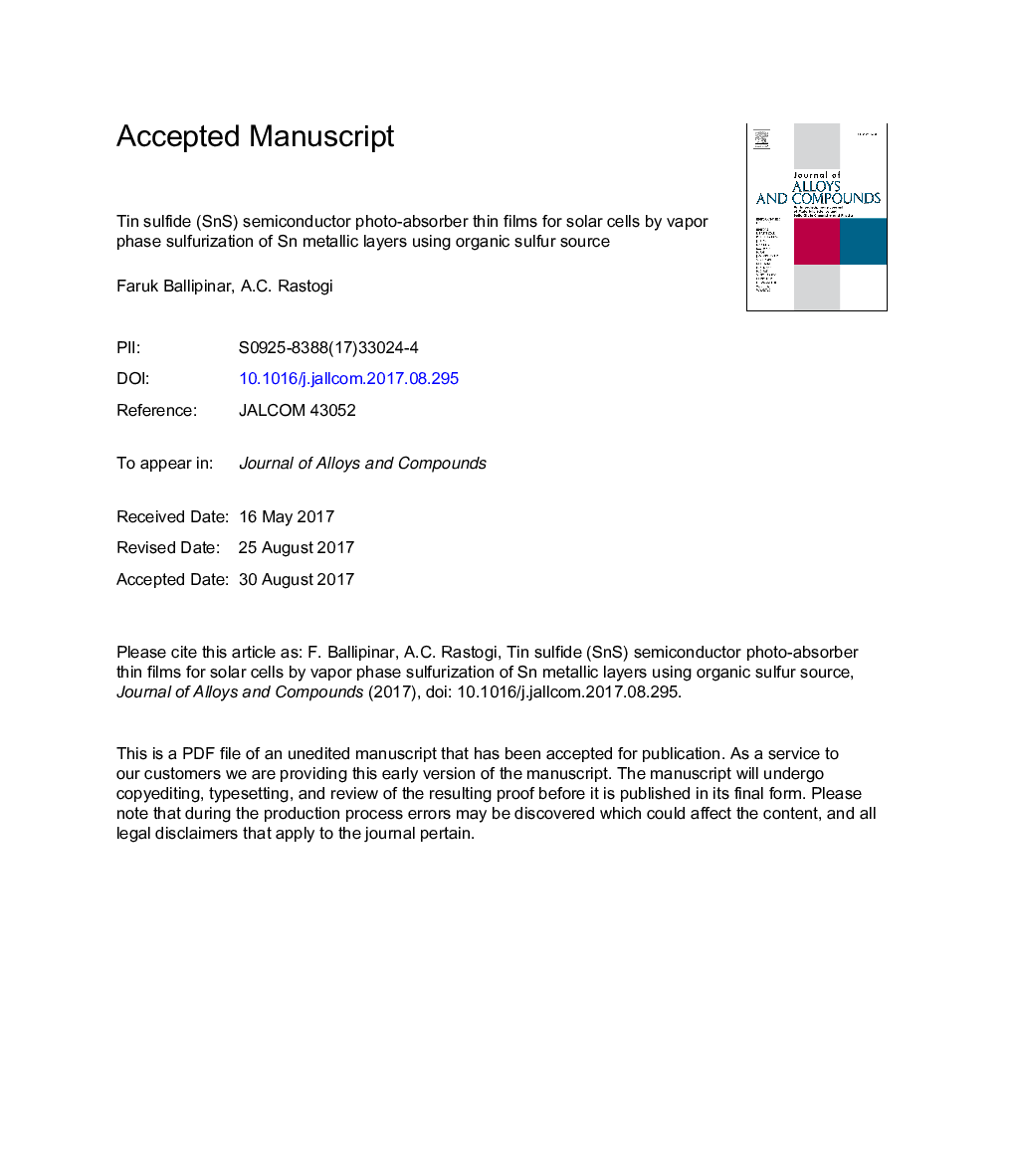| Article ID | Journal | Published Year | Pages | File Type |
|---|---|---|---|---|
| 5458129 | Journal of Alloys and Compounds | 2017 | 43 Pages |
Abstract
Tin sulfide (SnS) semiconductor thin films were deposited by organic chemical vapor sulfurization of metallic tin layers for application as photo-absorber in solar cells. Metallic 100-200 nm Sn thin films deposited by DC magnetron sputtering were sulfurized in di-tert-butyl-disulfide (TBDS) vapor stream with 100 sccm N2 flow under atmospheric pressure at temperatures 300, 350 and 400 °C for 90 min. X-ray diffraction study shows polycrystalline single phase SnS film formation in orthorhombic crystal structure with dominant (111) orientation at 300 °C and improved crystallinity with minor SnS2 and Sn2S3 phase inclusion at 350 °C. Raman spectral analysis shows dominant 92 cmâ1 and 222 cmâ1 Ag and B1u as well as lesser intensity 141 and 164 cmâ1 B2u and B3g vibration modes belonging to SnS. Sulfurization at 350 °C led to additional Raman peaks 147.6, and 176.7 cmâ1 assigned to B2u, and B1u modes of SnS phase consistent with the diffraction study. Emergence of Raman peaks at 152 and 308 cmâ1 indicate SnS2 and Sn2S3 phase growth alongside SnS in films sulfurized at 400 °C. The 350 °C sulfurized SnS film show indirect and direct band gaps of 1.1 and 1.56 eV, respectively and corresponding higher values of 1.42 and 2.07 eV for 400 °C sulfurized SnS films. Based on the microstructure, diffraction and Raman scattering results as well as optical transmission studies at lower sulfurization times, essential mechanism of SnS film formation and that of the inclusion of secondary phases is proposed.
Keywords
Related Topics
Physical Sciences and Engineering
Materials Science
Metals and Alloys
Authors
Faruk Ballipinar, A.C. Rastogi,
